
From Easter to Confirmation, the Spirit Dove is an amazing symbol for middle school students who are learning about their faith. This project covers Common Core Standards for Religion for grades 6-8.
Grade Level
6th, 7th, 8th grade. This project was created by 8th grade students.
Objective for Spirit Dove Art
From Easter to Confirmation, the Spirit Dove is an amazing symbol for middle school students who are learning about their faith.
Time
4+ – 30 min lessons
Materials
- Yellow and White Oil pastels – Pentel Arts Oil Pastels, 50 Color Set (PHN-50)
- 12×18 Watercolor paper – Canson XL Series Watercolor Textured Paper Pad for Paint, Pencil, Ink, Charcoal, Pastel, and Acrylic, Fold Over, 140 Pound, 12 x 18 Inch, 30 Sheets
- Black Sharpie Marker – Sharpie Permanent Marker, Fine Point, Black, Pack of 5
- Brushes – Acrylic Paint Brush Set, 1 Packs / 10 pcs Nylon Hair Brushes for All Purpose Oil Watercolor Painting Artist Professional Kits
- Liquid Water Colors – Sargent Art 22-6010 10-Count 8-Ounce Watercolor Magic Set
- Or this mini version for homeschooling – Sargent Art 22-6210 10-Count 4-Ounce Watercolor Magic
- Kleenex for blotting paint
Inspiration/Artist
I made this project from this awesome digital artist, Merrill Miller: Click Here. Here is the image that inspired this project.

Instruction with Questions
First
It is important, to give students reference to the meaning and history behind the dove found in the bible. These Youtube videos offer great explanations, for example, as to why the Holy Spirit is often symbolized as a dove. I also show them a video about the history of stained glass which also reveals the process of how one is made.
Holy Spirit
THE PARABLE OF THE DOVE
A Story in Every Stained Glass Window
Second
The artwork I found from Merrill Miller is so gorgeous. I used aspects of his artwork to create a template for this project. Below, is a dove for students to trace. I recommend printing it onto cardstock or watercolor paper so it is a little bit thicker and easier for tracing. Have the students trace it in the center of their 12×18 vertical paper with the beak facing the top right corner.

Third
Because the paper used is 12×18, it is not possible to offer a printable template for the shape surrounding the dove. Instead, ahead of the lesson, here is the shape that you can prepare for tracing. Project this onto the whiteboard. Tape a piece of watercolor paper to the board and trace the projected shape onto the paper. Cut out the shape and trace it a few times for students to pass and share and trace onto their own watercolor paper.
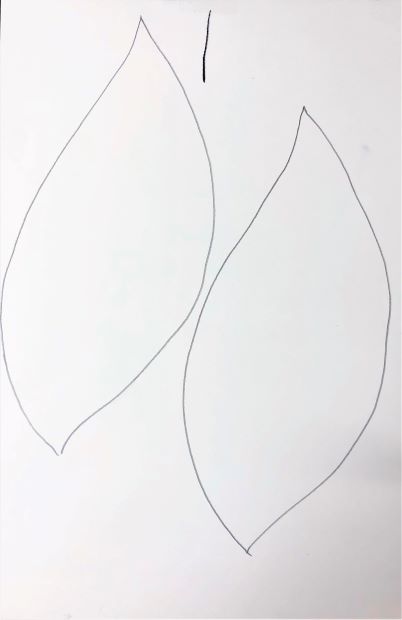
Fourth
I showed the students the actual artwork that inspired this lesson. I projected it onto the whiteboard and traced over lines step by step directly onto the whiteboard using whiteboard markers. Ask the students to look for the repetition of flame shapes. I had them find three and connected it with the Trinity. (shown in darker green) Then have them finish out the lines found on their three flames and the bird’s beak (shown in light green).
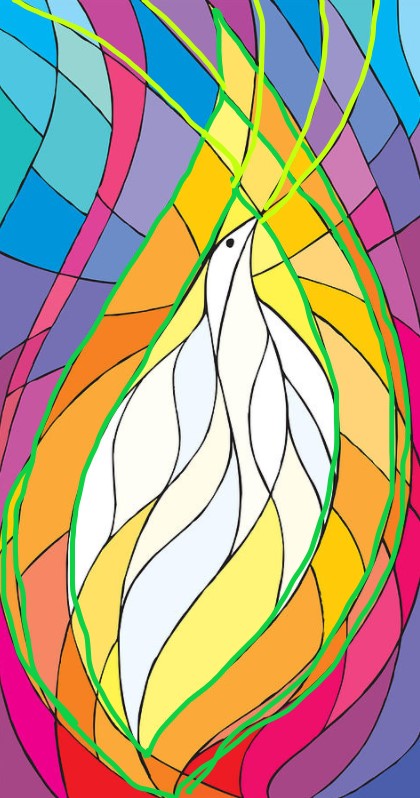
Fifth
Continue showing the students, step by step how to find the lines in their artwork. Create an X in the middle of the dove using the beak and wings as marking spots. (shown in purple)

Create more flame repetition as if it’s radiance is spreading over the page. (shown in white)
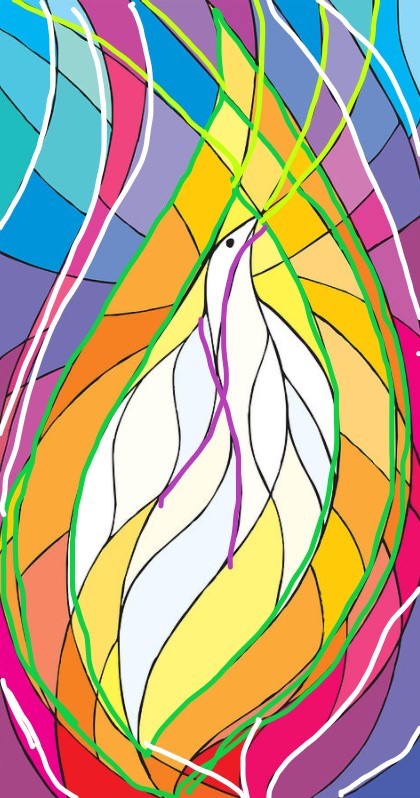
Next point out the energy of the remaining lines around the dove. The lines inside the flame mostly curve down, whereas the lines surrounding the flame arc up. (shown with dark blue)

Finally, students finish adding their own lines within the bird.
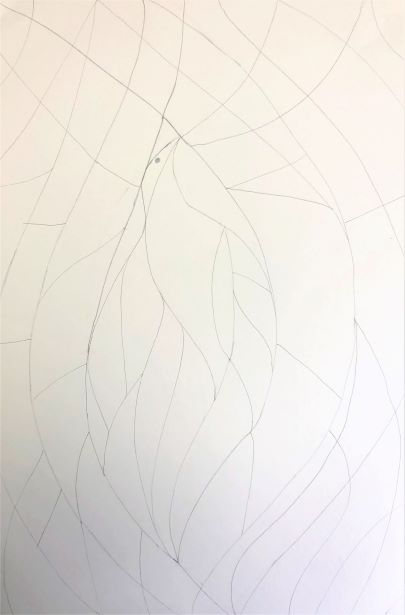
Sixth
Students trace over their lines with a black sharpie marker.
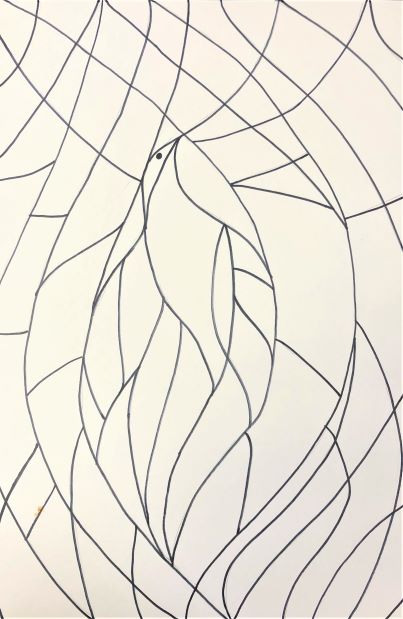
Then, using white (first) and yellow oil pastel, students create the inside area of the dove and the first flame. This will help protect and keep the dove pure. This could be a great time to connect the oil in the pastel with the oil that seals the holy spirit at Confirmation and Baptism. Man is that genius or what?!
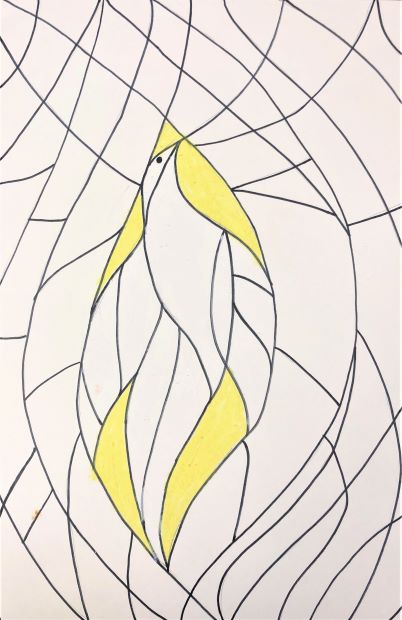
Seventh
Finally, set up two large stations. One side of the room has yellow and a variety of orange watercolors. Ask students to find the main flame that was part of the Trinity of flames. It is a great idea to even just have them mark a dot in all of the areas in this flame with yellow so their brain remembers to stay inside that area.
At the other station, students have a variety of blues, magenta and violet watercolors for the area surrounding the flame. This is also a great color theory connection between warm and cool colors.
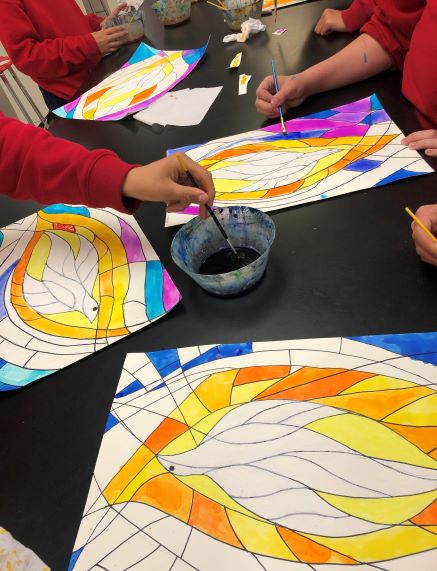
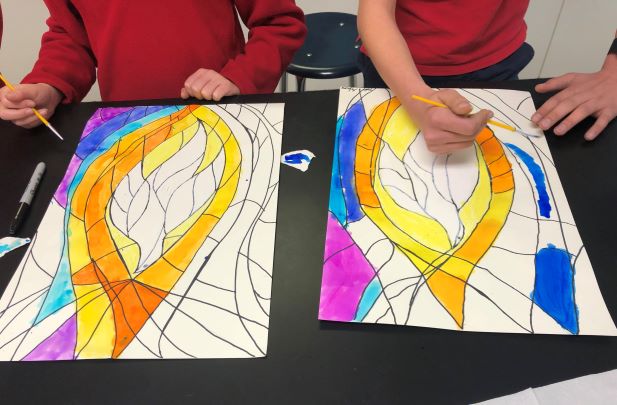
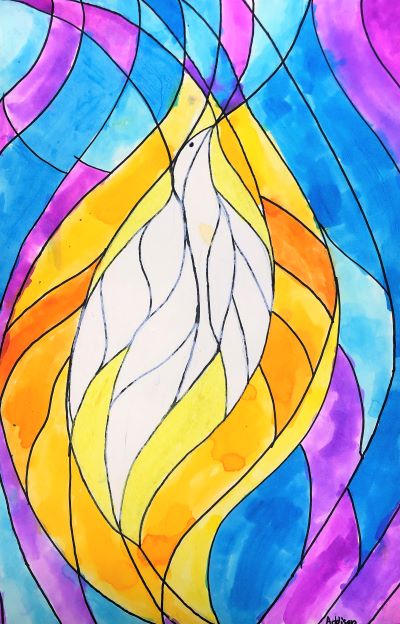
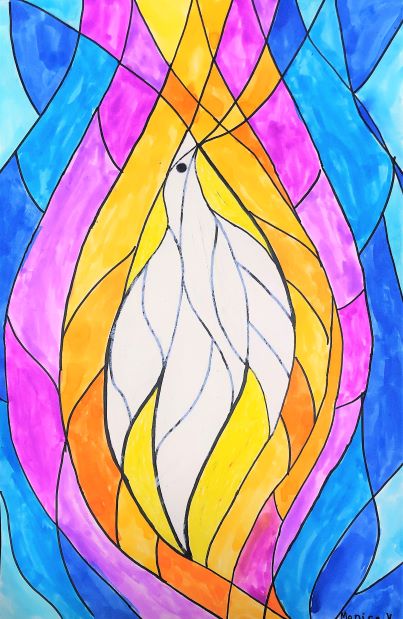



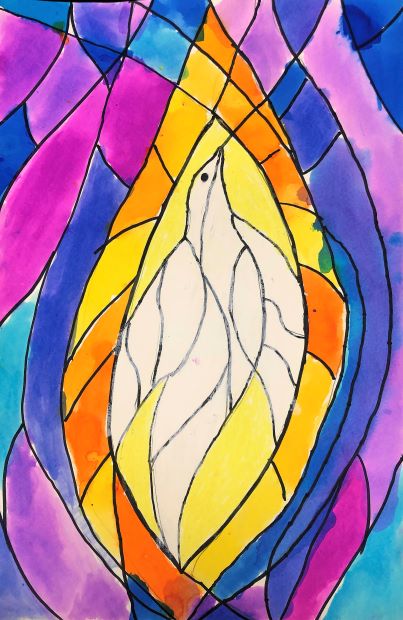
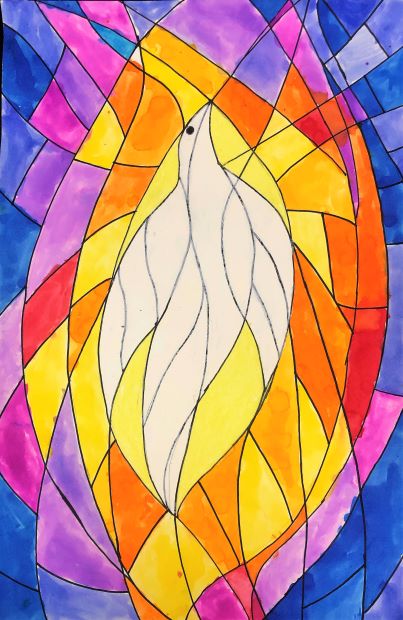


This is an awesome project! I’m excited for my eighth grade art students to do this for their Confirmation project. Thank you very much for all your great art ideas!